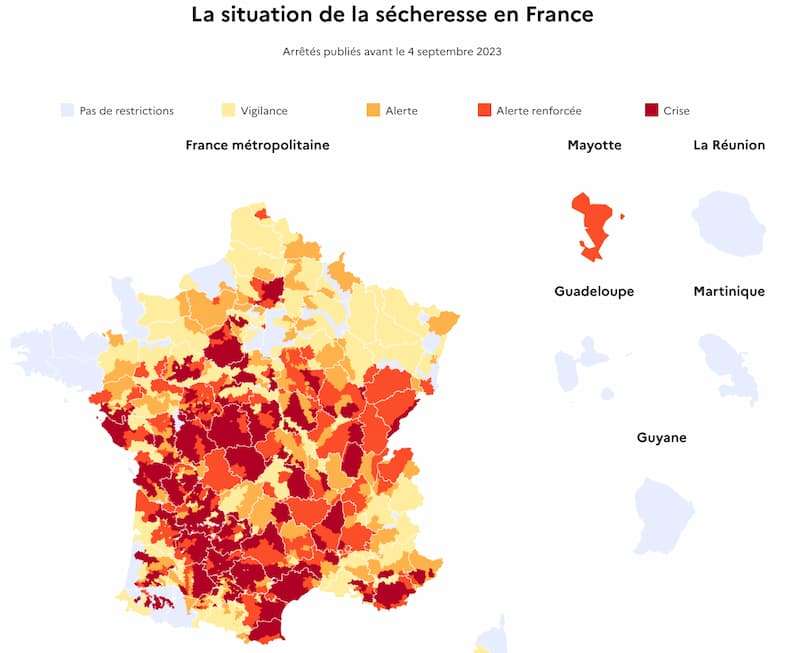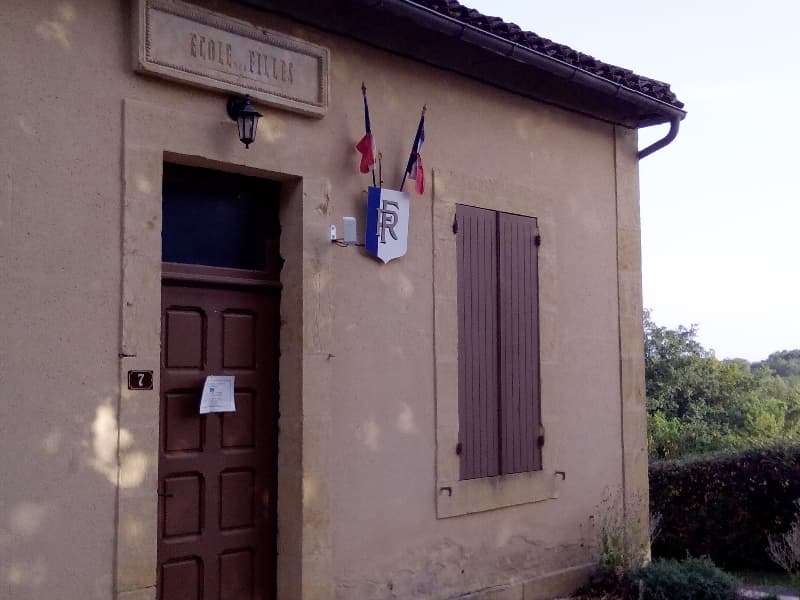
ALTHOUGH temperatures in France are not as high as last year, recent thunderstorms have not topped up water levels after a dry winter and spring.
This is forcing some areas of France to bring in water restrictions, often aimed at agricultural use but in certain cases targeting home use such as washing your car, hosepipe bans and filling up swimming pools.
In the Dordogne the préfecture has published information highlighting the areas across the region that face water restrictions, asking residents to be aware of their water use, including drinking water.
The French authorities are keen to make people aware of what they can do to preserve water, but they also provide up-to-date maps and reports on the water levels in the many rivers and streams in the country.
The VigiEau website
Launched in July 2023, the VigiEau website provides a simple way of seeing what restrictions are in place where you live.
You start by typing in your postal code and you address, the site then begins to offer you address details that lets you narrow down your search to you home.
Then just click the blue search button and you will get details of whether you are under any restrictions and what you can and can’t do.
For example, some homeowners are being told not to water their gardens between 8h and 20h, but some also face restrictions on topping up their swimming pool and cleaning their cars.
If you have any doubts or questions visit your local mairie as they are the first point of contact for information for homeowners.
Map and vigilance levels
There are four levels of vigilance. The lowest level in France is vigilance, or warning, and this means should be aware of their water use and try to conserve and not waste any water.
The next step up is alerte and this requires homeowners to reduce the amount of water they use, for example in swimming pools or if watering their gardens.

The agricultural sector can also face restrictions at this level, with a cut in the number of days they can water their crops for example.
The second highest level of warning is alerte renforcée and this could see homeowners asked not to wash their cars, a ban on the water of lawns and farmers being asked not to water crops for half the week.
And the highest level is crise which places an emphasis on ensuring drinking water is available to all residents and any other use facing tight restrictions or being banned completely.
Mairie for updates
A key thing to remember is that your local mairie should be your first port of call if you have any questions about what water use restrictions are in place local to you.

The four levels of vigilance are used as a guide, but because individual areas have different water use and river volumes, detailed studies and data is gathered on a daily basis to ensure any restrictions are tightly focused.
Fines for breaking water restrictions
The French authorities are keen to offer advice over punishment when it comes to homeowners breaking the rules covering water use restrictions.
You may be living in an area where restrictions on watering your lawn and gardens are in place, and whilst you should do your best to be informed, if you are visited by the local authorities they will usually issue a first warning and offer advice.
Should you continue to ignore the water use restrictions in place then you are likely to face problems, with initial fines starting at 1,500 euros and heading upwards to 3,000 euros for continued infringement.
Reduce your water use
The French environment agency is keen to promote wise water use and make people more aware of what they can do to save water.
In the home they stress the importance of not letting taps run, using your washing machine with a full load or on an eco setting and to install equipment that will let you reduce water use.
Farmers and businesses are also urged to recycle water and ensure any leaks are quickly dealt with.
How much water does the average French person use?
The daily water use on average in France is 149 litres per person, which covers domestic consumption such as drinking water, use in the bathroom and around the house.
This works out to 54 m³/person/year for domestic use.
And you can learn more about the quality of the water that comes out of the taps in France with these online maps.